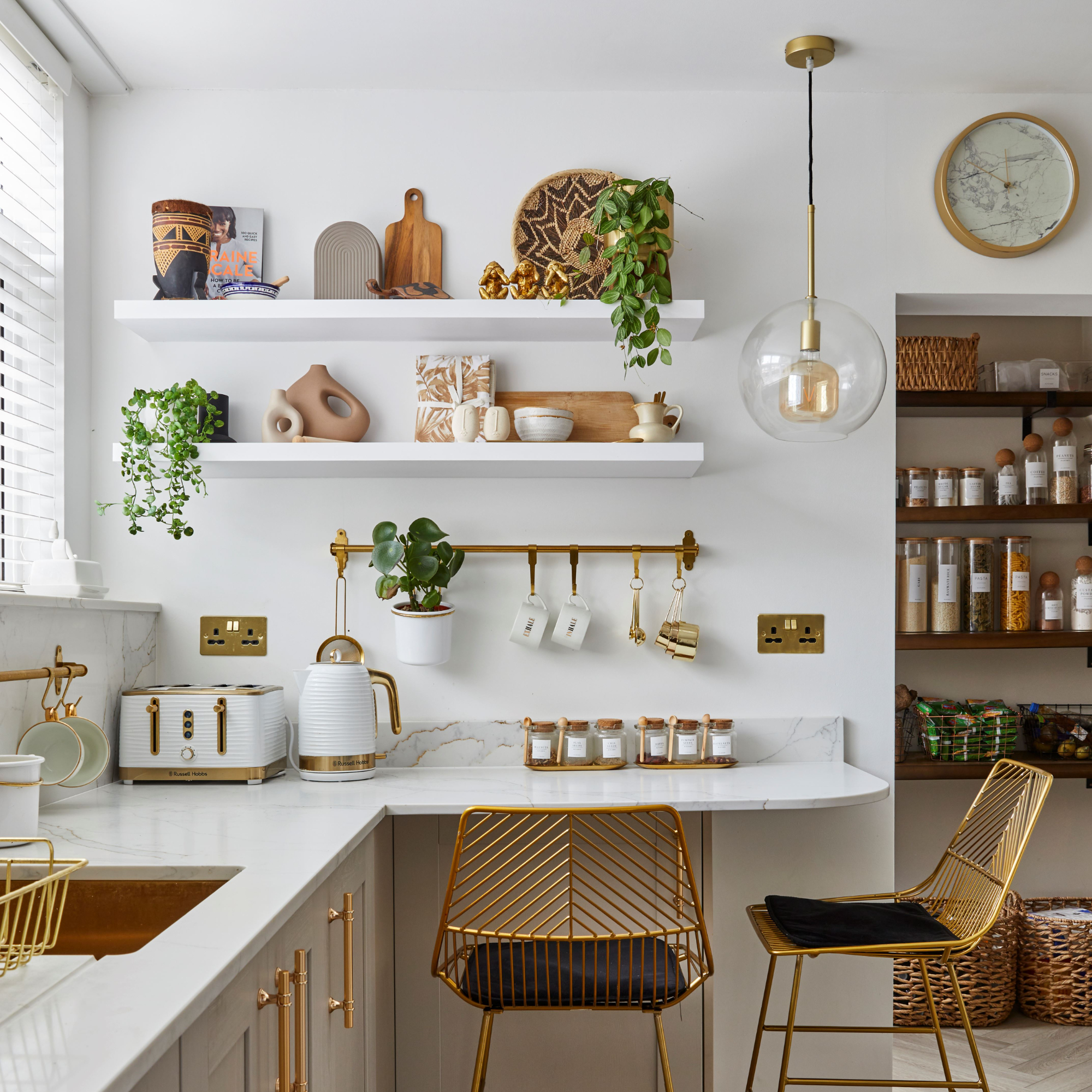
For a well-functioning home, style and practicality need to go hand in hand, so when you're trying to figure out where to position a kettle and toaster, there's a few things to consider.
Storing small appliances like kettles and toasters while keeping your kitchen looking tidy isn’t always easy. These everyday essentials can quickly clutter your space, but with a bit of smart planning, you can create a space that's both practical and beautiful.
These small appliances are kitchen staples, but they often end up as permanent fixtures on the worktop, taking up precious space. By incorporating the right kitchen storage solutions for these everyday items, you can keep your kitchen looking organised.
Whether you want these appliances within easy reach or prefer to tuck them away for a cleaner look, there are plenty of options to explore!
1. Prioritise everyday appliances

With the rise in popularity of appliances like coffee machines and air fryers, our kitchen worktops are filling up fast, making it increasingly difficult to find a home for everything. Smart storage for small appliances is key.
Louisa Eggleston, creative director for Humphrey Munson suggests considering this problem when planning a new kitchen by creating spaces for your less-used appliances, allowing more space for the kettle & toaster. ‘During the planning phase, consider how frequently each appliance is used.
Always prioritise the appliances you use the most and less-used items can then be stowed in less accessible areas like blind corner cupboards for example.’ Sure, that colour-coordinated stand mixer looks gorgeous on the worktop, but does it really deserve a spot of kitchen prime real estate if it only gets used occasionally?
2. Protect your cabinets

When deciding where to position your appliances, Louisa offers a word of caution about potential damage. ‘Heat and steam from appliances can damage cabinetry over time, so ensure good ventilation and choose moisture-resistant finishes to protect surrounding furniture,' she advises.
If your kitchen has been installed for some time, it’s wise to regularly check for any signs of steam damage, such as warping, cracking or discolouration, and take action before it worsens.
Moving these appliances away from wall-mounted cabinets and end panels is the safest option, preventing costly repairs and ensuring your kitchen stays looking fresh and new for years to come.
3. Create a dedicated zone

When it comes to planning your kitchen layout, one concept that you will hear designers coming back to is the concept of ‘zoning’ areas. Molly Chandler, designer at Willis & Stone, suggests this approach, ‘For those small appliances on display, it’s a good idea to choose a dedicated zone for them, ensuring there are power outlets in easy reach.’
Zoning also helps to prevent unnecessary kitchen traffic, especially during busy times like the morning rush, when multiple family members might be preparing breakfast or making coffee at the same time.
In small kitchens or busy family kitchens where space is already at a premium, zoning can improve both safety and efficiency. With the right planning, you can create a clutter-free, functional space where everything has its place, making your kitchen not only look more organised but feel calmer and more user-friendly too.
4. The appliance garage

If you have the luxury of planning a new kitchen from scratch or adapting your existing one, consider the latest kitchen storage trend of a dedicated appliance cabinet.
Molly adds, ‘Daily-use items such as kettles and toasters need to be easily accessible, either staying on the worktop or in an appliance garage or countertop cupboard. Countertop cupboards are very popular at the moment, allowing easy access to small appliances which can then be neatly hidden away behind the doors when not in use, keeping the worktop tidy.
'These cupboards would usually have power outlets within the cabinetry allowing the homeowner to easily plug them in without the need to move the appliance,' she concludes.
5. Time to ditch the kettle?

Boiling water taps are becoming a kitchen must-have, offering instant hot water without the wait - and they’re giving traditional kettles a run for their money. If you’re looking to free up some space, it might be time to ditch the kettle altogether.
Stephen Johnson, managing director at Quooker UK & Ireland, has officially declared war on the kettle! ‘What sounds like an indulgent luxury is actually one of the most energy-efficient and sustainable kitchen investments on the market,'
'Combining both form and function, all Quooker boiling-water taps use very little electricity and give tangible energy and water-saving results, thanks to innovative state-of-the-art technology,’ Stephen explains. Plus, these taps bring a sleek, modern vibe to your kitchen while cutting out the clutter!
FAQs
What are the best ways to store small appliances in a kitchen?
Tom Howley, creative design director at Tom Howley suggests solutions that prioritise hiding clutter.
‘I always recommend opting for furniture that hides the clutter, so that you don’t have to spend hours keeping the kitchen tidy. For example, a bifold cabinet is great for hiding small appliances such as toasters, coffee machines, blenders, and kettles, allowing you to use them easily, then close the doors to tidy them away,' Tom explains.
'For a more creative approach, you could transform your bifold dresser into a standout feature by making it a breakfast station. Organise it to host your essentials, starting with key appliances such as a coffee machine, toaster, blender and even a microwave, and include shelves or pull-out trays for storing breakfast essentials like cereal, tea, coffee, mugs, and utensils.’
Are you ready to rejig your small appliances? Just a few small tweaks could transform how you use your cooking space.







